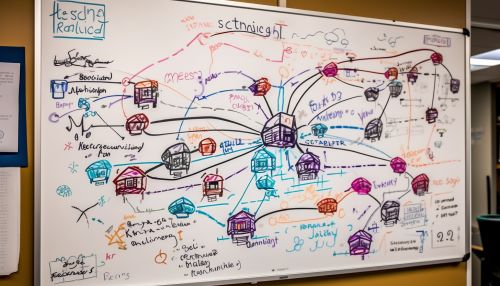Algorithm
Definition and Overview
An algorithm is a finite sequence of well-defined, computer-implementable instructions, typically to solve a class of problems or to perform a computation. Algorithms are always unambiguous and are used as specifications for performing calculations, data processing, automated reasoning, and other tasks.


History of Algorithms
The concept of an algorithm has a history dating back to antiquity. Ancient mathematicians used algorithms in the form of simple rules and procedures for solving calculations. The term 'algorithm' itself is derived from the name of the 9th-century Persian mathematician al-Khwarizmi, who was a scholar in the House of Wisdom in Baghdad.
Characteristics of Algorithms
An algorithm must have five important characteristics to be considered valid:
1. Finiteness: The algorithm must always terminate after a finite number of steps. 2. Definiteness: Each step in an algorithm must be clear and unambiguous. 3. Input: An algorithm has zero or more well-defined inputs. 4. Output: An algorithm should produce at least one output. 5. Effectiveness: An algorithm must be simple, generic and practical enough that it can be executed with available resources.


Classification of Algorithms
Algorithms can be classified into many types, but some of the most common include:
1. Recursive Algorithms: These are algorithms that solve a problem by solving smaller instances of the same problem. 2. Divide and Conquer Algorithms: These algorithms work by breaking down a problem into two or more sub-problems of the same or related type, until these become simple enough to be solved directly. 3. Dynamic Programming Algorithms: These algorithms solve a complex problem by breaking it down into a collection of simpler subproblems, solving each of those just once, and storing their solutions. 4. Greedy Algorithms: These algorithms make the locally optimal choice at each stage with the hope of finding a global optimum. 5. Brute Force Algorithms: These algorithms try all possible solutions until a satisfactory solution is found.


Design and Analysis of Algorithms
The design of algorithms consists of problem solving and mathematical thinking. Steps in the algorithm design process include problem definition, developing a simple model, and designing an algorithm to solve the problem.
Algorithm analysis is an important part of a broader computational complexity theory, which provides theoretical estimates for the resources needed by any algorithm which solves a given computational problem.


Algorithms in Computer Science
In computer science, an algorithm is a set of steps for a computer program to accomplish a task. Algorithms put the science in computer science. And finding good algorithms and knowing when to apply them allows us to solve more complex problems.
